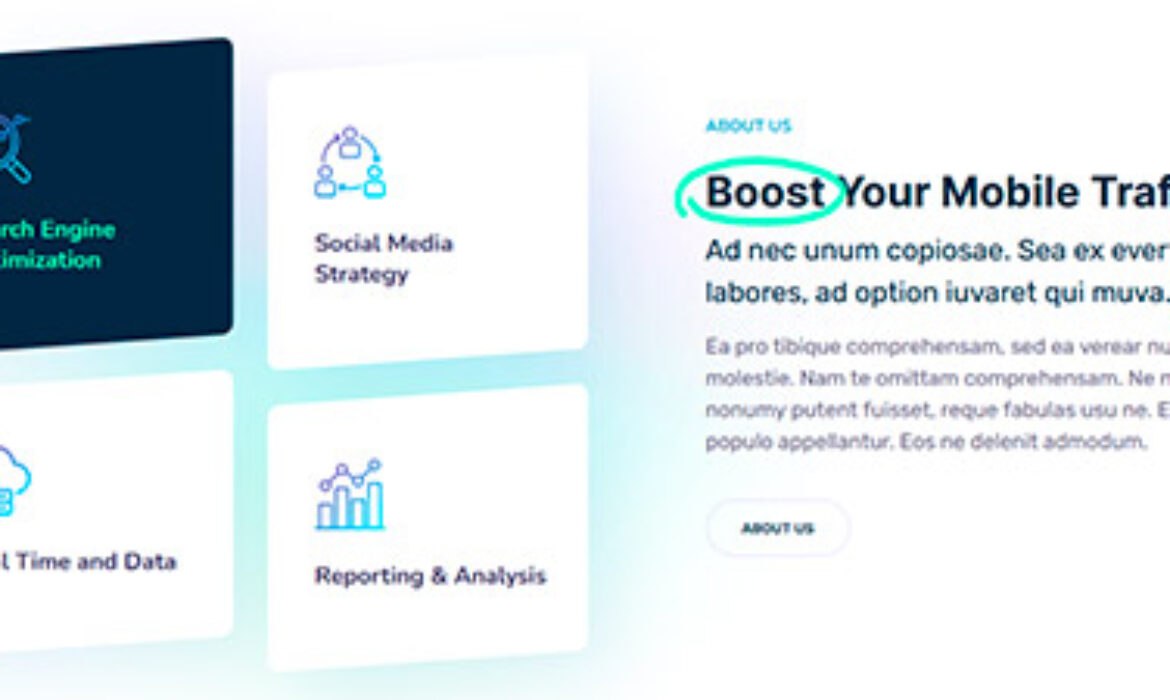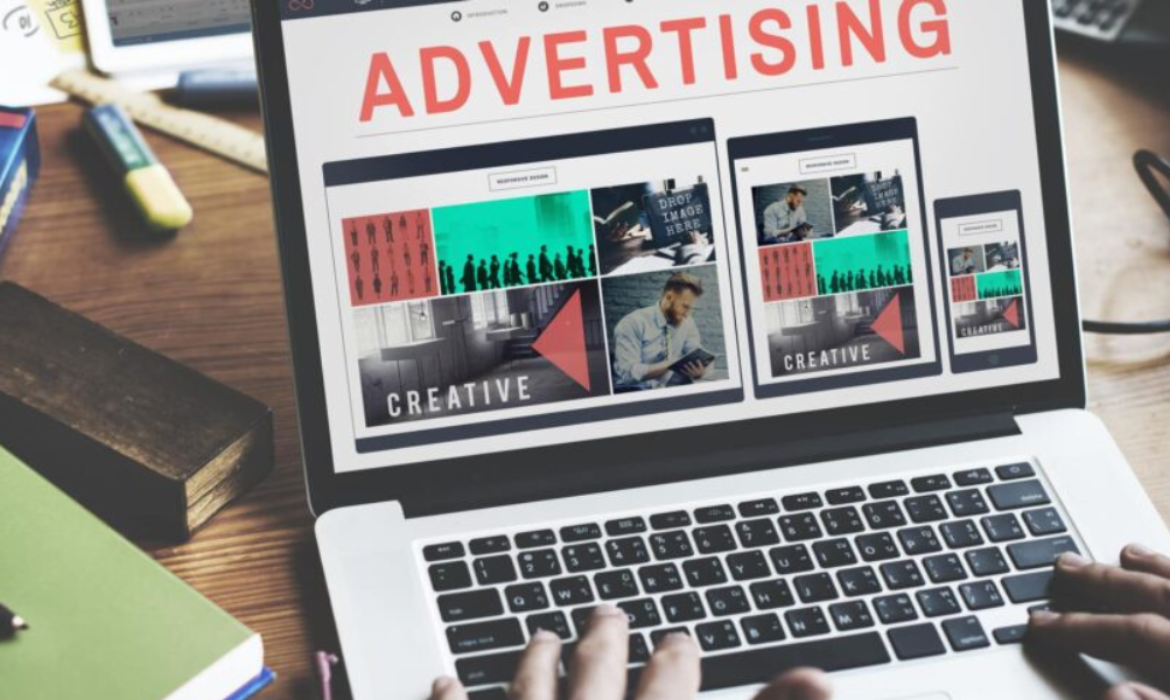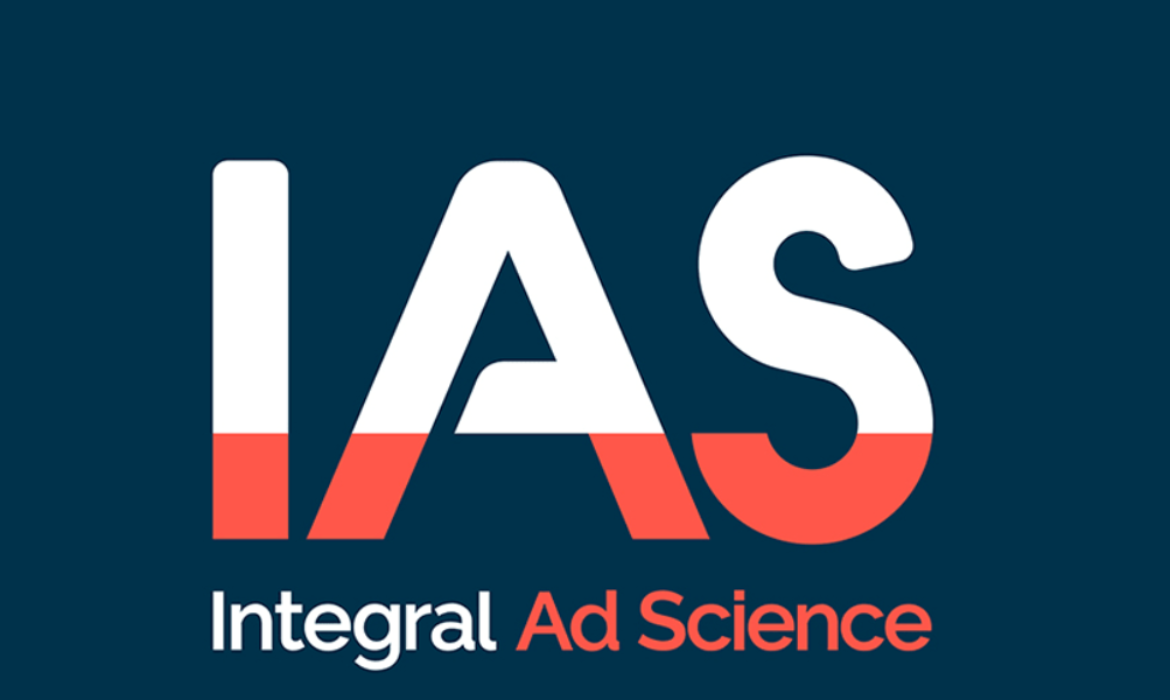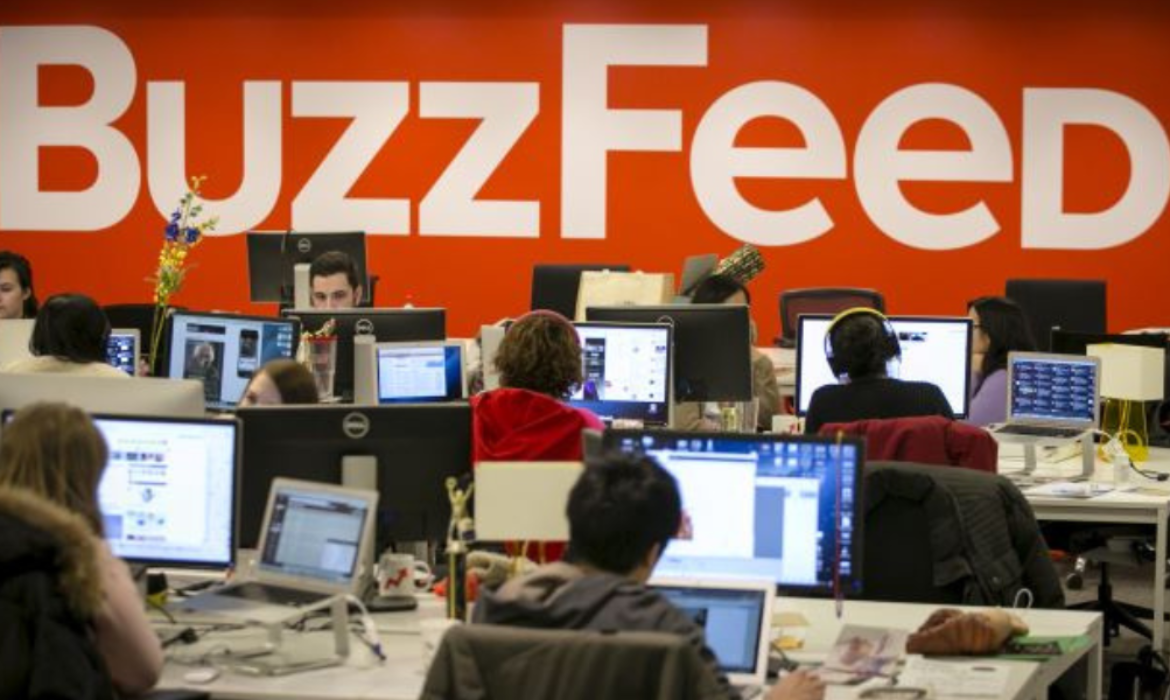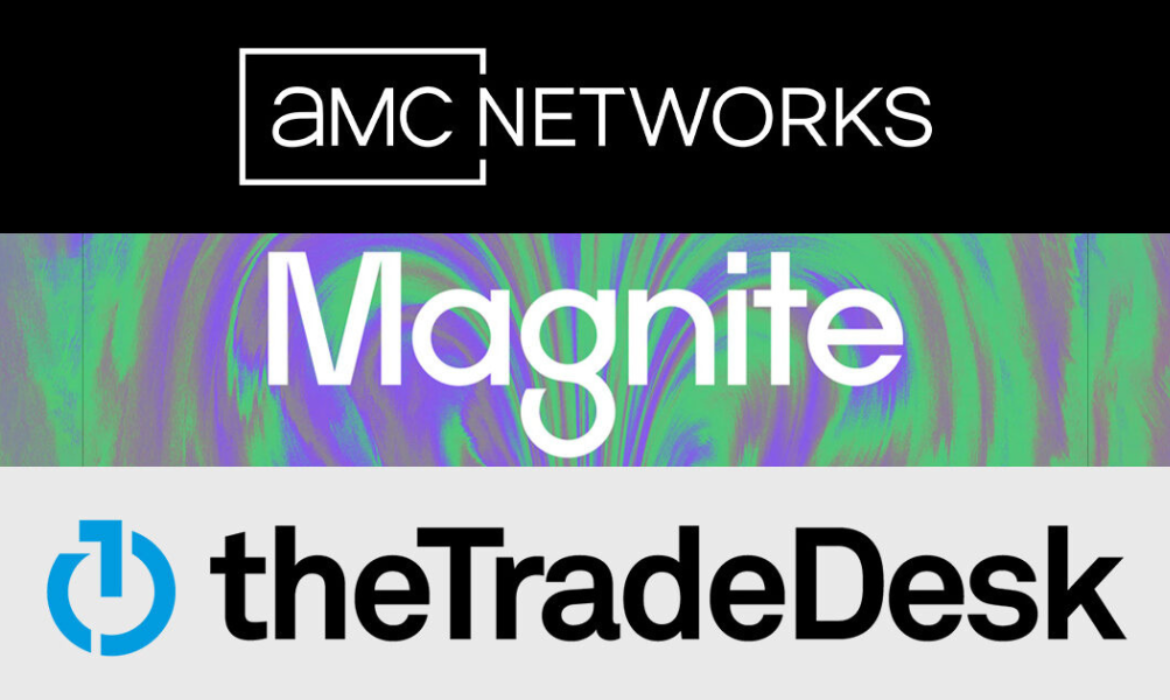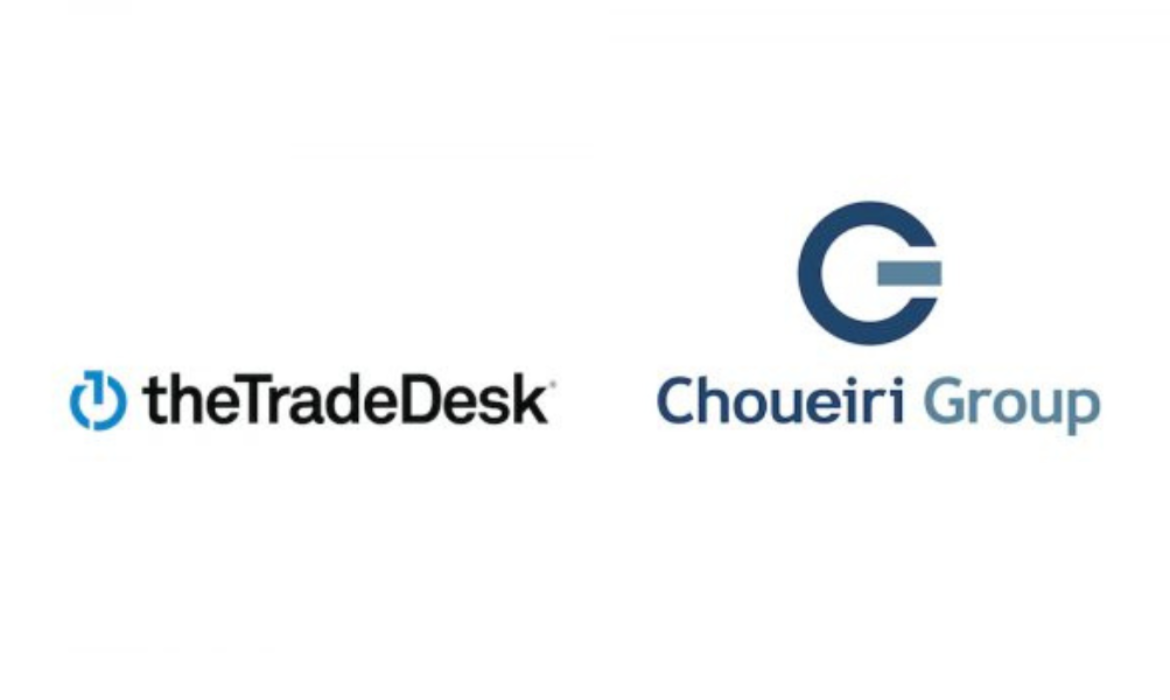Double Verify Extends LinkedIn Partnership To Launch Brand Safety Hub
Double Verify, a leading software platform for digital media measurement, data, and analytics expands collaboration with LinkedIn to launch DV Custom Contextual and DV Authentic Brand Suitability on LinkedIn Audience Network. Together, they will provide mutual clients with scalable solutions to reach audiences, in contextually appropriate and relevant environments, at the right time – to help maximize campaign performance.
The two solutions empower advertisers to ensure their campaign impressions are delivered on inventory that aligns with their brand safety, suitability, and contextual needs. This DoubleVerify expansion is part of LinkedIn‘s plan to roll out a safety hub for its LinkedIn Audience Network. It also includes a list of publishers, as well as the ability to upload and apply block lists and custom-allow lists.

Credit: LinkedIn
How will the advertisers benefit?
DV Authentic Brand Suitability goes beyond standard categories and keyword blocklists and offers customized protection to advertisers to avoid unsafe and unsuitable content before placing a bid. DV Custom Contextual provides advertisers with a scalable solution to reach the right audiences, at the right time – driving outcomes for brands.

Credit: LinkedIn
As part of this release, the company builds on its previous work with LinkedIn to provide brand safety floors and invalid traffic protections on LinkedIn Audience Network. It ensures advertisers are protected from universally unsafe content. Through the Brand Safety Hub, LinkedIn aims to help marketers boost their advertising campaigns on the LinkedIn Audience Network, while also allowing them to customize their brand safety guidelines.
And what they said
Steven Woolway, EVP, Business Development at DoubleVerify said,
“Our work with LinkedIn underscores DV’s continued leadership position in optimizing media quality and performance holistically across the digital media landscape providing our advertisers the confidence to invest across channels and environments.”
“LinkedIn is a leading platform for B2B digital advertising, and we are thrilled to collaborate to support brand suitability and contextual targeting.”
Adweek reported that LinkedIn vice president of product Abhishek Shrivastava said in a statement,
“Through our work with DoubleVerify, we’re continuing to empower our customers to scale their marketing across our network of publishers to reach and engage a professional audience. The evolution of our collaboration reinforces our goal to foster a safe and trusted ecosystem with added controls to help customers drive better value from their campaigns.”
Read More: The Journey From Deterministic To Probabilistic Marketing
Brightcom Partners With Intent IQ To Strenghten Its Adtech Offering
Brightcom, a publisher-side platform, is partnering with Intent IQ, an identity verification company. This will allow Brightcom to take advantage of Intent IQ’s bid enhancement service. It aims to better identify IDs in a cookieless environment, leveraging and maximizing monetization for Brightcom’s publishers’ portfolio.
Read More: Walmart Connect: Walmart’s Ambitious Advertising Plans For Its Programmatic Platform
Details: With this partnership, Brightcom Group intends to enhance its bidding capability in RTB and programmatic advertising environments. The loss of cookies in browsers makes it increasingly difficult to target online ads. Therefore Intent IQ’s identity device graph will aggregate Brightcom’s publisher SSP and DSP IDs into one Intent IQ Person ID. It will do this while returning partner SSP and DSP IDs when those are missing. CEO Etai Eitany stated that Brightcom is known for its ability to help site owners and applications generate revenue across a variety of devices and environments, such as display, audio, and video.
Intent IQ is a subsidiary of AlmondNet Group that holds 150 patents mostly related to ad targeting. The company currently uses first-party ID clustering as part of its targeting process. First-party IDs are grouped into interests, or mobile app IDs are grouped into devices visited by the browser. Intent IQ supports third-party cookie and cookieless environments, such as Safari and the future Chrome.
What’s ahead: eMarketer reports that US advertisers spent 41.2% more on programmatic display ads in 2021—the biggest annual increase since 2016. It is expected to reach $141.96 billion in 2023.
In spite of lingering uncertainty as third-party identifiers are slowly phased out, programmatic advertising is booming. It is expected to provide the required transparency to the marketers for their campaigns, especially in a cookieless environment. This works only if advertisers know where their ads are appearing and what kinds of audiences see them. Therefore, programmatic advertising can gain ground when advertisers, ad tech platforms, and publishers work together for a new normal.
Read More: Omnicom Media Group Sets Up Industry’s First Programmatic Private Marketplace
Integral Ad Science Reports Strong Q4 Earnings With CTV Growth
With a focus on measurement and ad verification, Integral Ad Science is pursuing two trends: contextual targeting and connected television (CTV). The company, which reports quarterly earnings, earned $323.5 million last year, an increase of more than a third from 2020. However, Integral’s net loss grew year-over-year as well, from $32 million to $52 million. CEO Lisa Utzschneider told investors that the key focus of the company is ‘growth’.
The recent significant acquisitions have enabled IAS to acquire key technologies, services, and global teams in key growth areas, such as CTV, contextual targeting, social media, and supply chain optimization.
It has now hired over 100 people every quarter, more than any previous quarter. In Q4, IAS’ biggest acquisition, Publica, brought in $7.5 million of total revenue. Publica was acquired for $220 million, the largest of three acquisitions IAS made last year. The Publica business is only 8% of Integral’s total revenue at the moment, but it’s a key component of Integral’s expansion into CTV. Lisa Utzschneider, CEO of IAS joined in late 2018. As stated by AdExchanger that Moat lost shares and customers following its acquisition by Oracle Data Cloud, leaving IAS and DoubleVerify, which also went public last year. To chase the CTV opportunity, however, means competing with other players, such as Nielsen.
Interesting Read: All You Need To Know About Connected TV Advertising!
A CTV ad server, such as Publica, can gather supply-side information, like the app or show in which an ad appeared, or the type of video content, in order to improve ratings for TV campaigns. Many global publishers have chosen Publica to power their ad serving and to accelerate their CTV strategies. These include new integrations with rlaxx TV, VlogBox, and WPSD Local 6 as part of Paxton Media Group.
Utzschneider told AdExchanger, “It’s helping us launch differentiated products that our competitors just can’t build.”
Even though CTV is the biggest growth prospect but counterintuitively programmatic continues to be a tailwind for the business, and it continues to drive accelerated growth. Advertiser-direct, programmatic, and supply-side are the three main revenue areas for IAS. Advertiser direct revenue climbed 7% year over year, including revenue from the open web and social platforms. The fourth quarter’s programmatic revenue increased by 43% year over year. On a combined basis, advertiser revenue accounted for 84 percent of total revenue. The programmatic segment is expected to surpass the advertiser direct segment in the first quarter of 2022 as the largest component of total advertiser revenue.
A key driver for programmatic growth is the company’s contextual advertising product, which directs advertising dollars into brands-safe or brands-appropriate content. It also reconciles campaigns when ads are delivered to inappropriate media for brands. A potential investor asked in the earnings call whether geopolitical tensions (referring to the invasion of Ukraine by Russia) and increased online attention and social media content related to those “events” influence IAS’ interactions with advertisers. Utzschneider said,
“In terms of geopolitical events, our technology and services have never been more relevant. It’s — the relevancy has carried throughout this year, last year, given all of the unprecedented events that we have all experienced. And again, marketers, they continue to lean into our brand safety, brand suitability solutions, especially as we’re seeing that rapid adoption on the social platforms, the dynamic nature of social platforms and also the unpredictability of the content.”
Interesting Read: How Advertisers and Brands Are Responding To The Ukraine Crisis
Buzzfeed Integrates Yahoo’s Alternative To Third-Party Cookies
The second phase of Yahoo and BuzzFeed’s strategic relationship was unveiled recently. This phase focuses on expanding addressable audience pools, which will provide advertisers with the scale they need as the usage of third-party cookies decreases, resulting in more programmatic advertising revenue.
Advertisers that use Yahoo’s supply-side platform will get priority access to BuzzFeed’s network of sites, which includes BuzzFeed News, Tasty, HuffPost, and others.
According to Iván Markman, Yahoo’s chief business officer, BuzzFeed will integrate Yahoo’s identity tech products, ConnectID, and Next-Gen Solutions, combining its first-party data with Yahoo’s to generate an addressable audience of over 148 million individuals.
Markman added –
“We need to have solutions for publishers with first-party data and those without first-party data. And because we treasure our consumers, in order to do that we need to have a community garden, as opposed to a walled garden, where we partner with like-minded publishers to help all of us grow.”
Interesting Read: End Of Third-Party Cookies, What Is There For Marketers: Takeaway!
The agreement will assist both publishers to expand their advertising and data functionality, as well as boost audience scale, ahead of the looming deprecation of third-party cookies.
According to Ken Blom, SVP of ad strategy and partnerships at BuzzFeed, by giving preferential programmatic access to advertisers leveraging Yahoo’s SSP, BuzzFeed intends to enhance demand for its inventory and create greater ad revenues.
Preferred access allows BuzzFeed to establish arrangements with advertisers that use the platform ahead of time, such as ensuring them access to certain audience groups. This ensures that advertisers achieve their goals at scale, while BuzzFeed has access to the most diverse demand conceivable.
Also Read: Quick Guide: Top Programmatic Trends To Keep An Eye On In 2021
AMC Networks Offers Programmatic Addressable Advertising On Linear TV
An industry first, AMC Networks makes addressable programmatic television advertising a reality. It announced a partnership with two of the biggest names of adtech – Trade Desk and Magnite.
The First Of Its Kind
The cable programmer worked on several campaigns with national advertisers to enable programmatic and addressable buying on linear television. The new capability allows advertisers to buy live TV inventory with the same type of automated technology traditionally reserved for digital.
For more than a year, AMC Networks has been working to make it possible for advertisers to buy linear TV through automated and programmatic platforms. The aim was to enable advanced and automated buying tools, with enhanced targeting around popular and high-quality content.
Evan Adlman, senior vice president of advanced advertising and digital partnerships for AMC Networks pledges to work on 100% linear reach addressability. He also added that providing a full range of advantages on linear television will be the prime focus of the advertising partnerships
“This is a huge development, for us and for the entire industry, unlocking the value of linear inventory by providing advanced programmatic buying, with full addressability, on linear television.”
Interesting Read: All You Need To Know About Connected TV Advertising!
Successful Pilot Experiment With The Advertisers
The cable programmer enabled the addressable TV capabilities in Q3. It teamed up with The Trade Desk and sell-side platform Magnite to implement addressable programmatic buying for major advertisers like Best Western, Smithfield Foods, Securian Financial. In a statement, AMC Networks said all these clients continued to stay live in the fourth quarter. It is also working to expand the current brand partners and add new ones.
In the past, such buys were only available for AMC Network’s web content, which is generally less expensive. Programmatic buys on linear TV involve advertisers cross-referencing their own first-party datasets with those of media owners to improve their audience targeting. This is usually accomplished using an encryption tool such as a data clean room.
Crucial Partnerships
AMC Networks claims the partnerships are crucial in an effort to protect the core linear product. In partnership with Magnite, the cable programmer intends to make linear reach 100% addressable, regardless of where the consumer views the advertising.
Matt McLeggon, senior vice president of advanced solutions, Magnite said,
“The work we’ve done with AMC brings the full power of programmatic execution to linear TV for the first time and gives advertisers the technology they need to holistically manage campaigns across CTV and linear TV.”
AMC claims an ideal partnership with trade Desk, a buy-side tool popularly known as a demand-side platform. Owing to the Trade Desk’s wide base of media buyers., more advertisers can access inventory.
Tim Sims, chief revenue officer, The Trade Desk said that the partnership will bring advertisers all the advantages of programmatic plus the opportunity to buy high-quality content like never before.
“Giving advertisers the access to a new pool of premium inventory and the ability to use their first-party data through this linear addressable capability is a perfect match.”
Interesting Read: Trade Desk Partners With Choueiri Group For Better Programmatic Access In MENA
FoxPush Launches The First Middle East Supply-Side Platform
Dubai-based FoxPush announced the launch of the Middle East’s first supply-side platform (SSP). It is the region’s first company to provide a full-stack solution for publishers and advertisers. The platform gives publishers access to high-demand premium content while providing advertisers with greater transparency and visibility of the marketplace. Moreover, it helps the buyers and sellers maximize the revenue they have made through the brand management of their companies.
Interesting Read: Programmatic Advertising Platforms in 2020: A Complete Guide
How Will The Supply-Side Platform (SSP) Help The Publishers?
The supply-side platform allows web publishers to control their ad space and leverage ad revenue. FoxPush promises a 90 per cent+ fill rate by introducing SSPs in the Middle East and hopes to enhance the advertising space to a great extent. Considering the standard practices of the regional market, the company has created a tailor-made platform for MENA-based advertisers.
-The new technology will help publishers increase their revenue through premium advertising.
-A unique lead generation tool is provided to improve the user experience on publishing sites.
-The software can detect languages such as English or Arabic based on keywords, domain links, and creative images of the ad. As a result, it allows publishers to block the display of inappropriate ads on their pages.
Read More: JGroup and FoxPush Announces World’s First Arabic Demand Side Platform.
That’s What They Said!
JGroup has made an investment of USD 15 million in FoxPush. Founder and CEO of JGroup, Imad Jomaa, says that FoxPush will enable publishers across the Middle East to enhance their offerings.
“Supply-side platforms are among the leading players in the online advertising ecosystem, and the launch of the Middle East’s first built SSP is a milestone achievement for the whole MENA advertising industry.”
He further added,
“We are glad to see FoxPush keep on track with global innovation to quickly adopt the latest technologies to offer consumers within the regional market with the latest standards in the industry.”
Ahmed Elsayed at FoxPush commented,
“FoxPush is an innovative player in the supply side platform space, being the first organization to bring in certain aspects of the technology in the MENA region. We are excited to see the potential of the platform in the region and aim to strengthen the brand presence of companies across the region.”
Interesting Read: A One-stop Guide On All You Ever Need To Know About AdTech In 2020
Trade Desk Partners With Choueiri Group For Better Programmatic Access In MENA
The Trade Desk, a global advertising technology leader, enters into a partnership with the Choueiri Group. The latter is a leading media representation group in the Middle East that shares close ties with the region’s largest broadcasters and publishers.
Why this partnership?
The partnership will provide greater access to programmatic ad inventory in the Middle East region. It will allow advertisers to launch and manage their digital campaigns across multiple channels like DOOH, Connected TV (CTV), desktop, and mobile.
Trade Desk and Choueiri Group: An Expertise Exchange
Choueiri’s extensive inventory will offer scale to the brands. Advertisers will also benefit from Trade Desk’s enhanced measurement and data capabilities. It will help them to provide a better customer experience and advanced campaign performance. Choueiri’s newly formed in-house agency, InMotion FZ LCC, will also utilize Trade Desk’s technology to assist local brands to meet their marketing targets.
The partnership will provide global and local brands access to Choueiri Group’s range of inventory across MENA, Europe, and Japan.
Relevant Read: Trade Desk Partners With Samsung Ads For Programmatic CTV
That’s What They Said
Phil Duffield, UK Vice President at The Trade Desk, said,
This partnership combines The Trade Desk’s technical prowess with the Choueiri Group’s unrivalled media connections – a powerful combination for advertisers. Together, we will bring advertisers a media-buying experience that’s independent, objective and helps them reach audiences through data-driven targeting
He also said that the TD was especially enthralled that Choueiri Group will be able to use their platform, which just underwent the most significant update in its history, to push digital advertising ahead in the region. Duffield further added –
The MENA region, with Choueiri Group at the forefront, is on an exciting journey of digital transformation and we’re delighted to be providing them with the tools to make the most of every opportunity
Michel Malkoun, Chief Growth Officer at Choueiri Group added that they are thrilled to work with the top-class platform with advanced expertise, The Trade Desk. He further said,
There has long been a gap between planning and delivery when it comes to programmatic in MENA, but through this partnership, we can join up the process and drive better results, elevating the perception of this type of advertising technology in MENA.
Malkoun said that they are eager to leverage this relationship to combine more thoughtful, data-driven buying methods and fully use The Trade Desk’s platform’s capabilities.
The partnership will be officially live by the end of 2021.
Also Read: All You Need To Know About Connected TV Advertising!
Here, There, Everywhere, It Is Cross-Screen Advertising!
The landscape of advertising has changed beyond 360 degrees and especially the online marketing ecosystem. Cross-screen advertising is one such opportunity for advertisers and marketers to strengthen their services. Today, consumers are spoilt for choices, when it comes to content options. The number of screens and devices to view content is just increasing for consumers -TV, connected TV, mobile, OTT, laptops, and more.
Cross-Screen Advertising: Dismantling The Concept
Switching between multiple devices is the new way of content consumption. Here are some compelling statistics that an average person spends per day on different devices:
- over 195 minutes on a smartphone;
- 135 minutes on a computer and,
- 85 minutes on a tablet
So, why target a particular audience only on one platform?
Through, cross-screen advertising, advertisers have the advantage to reach the larger targeted consumers via multiple screens to drive sales, increase brand awareness, generate leads, and more. A question that is frequently discussed is addressable TV advertising is growing and is also targeted, data-driven, and provide invaluable insights to advertisers. How does it differentiate from Cross-Screen addressable advertising?
To put it simply, cross-screen addressable advertising is perfectly complementary to TV. It is scalable and offers has ample opportunities for advertisers to deliver relevant content on the go.
Say, for instance, an advertiser shows an ad on TV and then on the mobile with a CTA to visit the store nearby for an electronics brand. The result was actual visits to the store and purchasing the product. This type of advertising serving an engaged audience makes complete sense.
A targeted, well-developed cross-screen advertising can significantly increase sales. Analysis by 4INFO suggests that more than 90% of advanced cross-screen TV advertising witnessed online sales lift. Further analysis states, for retail, combined TV and digital campaigns resulted in a sales lift as high as 129% and a 146% increase in brand penetration.
Even though cross-screen addressable advertising is catching up and allows you to follow the audience from TV to the desktop to mobile. Marketers are already experimenting with cross-screen marketing campaigns but the challenge lies in tracking and measurement.
Cross-Screen Advertising: Measurement & Impact
Cross-screen advertising measurement has no specific definition. It simply means analysis of the consumer behavior and tracking of video metrics across devices-Mobile/Laptop/Tablet/TV/ Advanced TV and some cookie-based methods.
Cross-screen advertising measurement is crucial for marketers as they seek to comprehend how consumers have changed their viewing habits amongst multiple devices. The cross-screen measurement starts from device-level as multiple identifications are required. It will guide the marketers to know the link between the devices and unlock the potential with the proper use of algorithms.
Cross-Screen Advertising Measurement is based on:
- Content Gazing
- Multitasking Information
- Discovery
- Connection
- Sharing
The cross-screen targeting depends on the above factors as consumer utilizes each device differently while consuming the content online. Louqman Parampath, vice president of product management – advertising, at streaming-device maker Roku said to Beet,
“If you go to more performance-savvy advertisers and performance-savvy customers, the questions are about understanding cross-screen exposures to business outcomes or KPIs that the marketer may need.”
AdTech companies like Roku, Xandr, Trade Desk, Samsung Ads, and more are coming up with different cross-screen advertising measurement solutions to understand online campaign performance across different platforms. Whereas, Neilson already offers a comprehensive solution Digital Ad Ratings (DAR) to measure digital audience demographics across mobile, computer, and connected TV in a way that is comparable to television measurement.
What makes a good Cross-Screen Measurement Partner?
With every marketing dollar being scrutinized, it is essential to note that the cross-screen TV measurement partner is transparent. The key to precise measurement lies in a partner who leverages a combined TV dataset with cross-screen identity. For instance, a combination of STB data with ACR will provide a more comprehensive picture. Further, linking to CTV publisher ad exposure data gives accuracy and privacy.
(eMarketer estimates advertisers will increase their upfront CTV video ad spending by almost 50% year over year to $4.51 billion.)
Related Article: All You Need To Know About Connected TV Advertising!
A good measurement partner can capture all platforms and provide a holistic view of video investment – Linear, CTV, VOD, addressable and more. Here are a few questions that need to be addressed for a good partner:

Credit: Liveramp
Cross-Screen Measurement: The Advertiser’s Narrative
Cross-Screen Measurement gives way to advertisers and media owners to collaborate over data and flexibility. Here are some factors to help the advertisers to always be on cross-screen advertising measurement.
- Right Target: With cross-screen advertising and the right selection of targeting options, advertisers can reach millions of consumers. An advertiser can also target the same customer on different channels.
- Holistic approach: Advertisers should have a holistic view of the cross-screen investment. They should create an idea to work combined on TV plus computers, mobile, streaming, or advanced TV to set success through cross-screen advertising.
- Scalability: An advertiser should be clear with a plan to scale the business. They should be able to link cross-screen measurement with sales data and answer the question of whether the total video investment is driving the bottom line.
- Tracking and measurement: Advertisers should be able to track the KPI’s. They should have the know the targeted audience and the time of their activeness to promote the services/products. This will help the brand to build a loyal customer base.
- Cross-screen marketing: Advertisers are well-informed that it is time to reboot traditional practices. It is time to innovate to reach a larger audience. The cross-screen marketing campaign is reaching more customers on all devices. Today, consumers have a fragmented attention span. So, cross-screen advertising allows reaching wherever their fragmented span lands them. For instance, if the consumer is using a tablet in the evening while watching TV, target your campaign in both places. Carry an integrated campaign across different screens.
Let us understand the magic of Cross-Screen Advertising with the below examples:
1.M &M – Come Together
A classic example of a cross-screen marketing campaign that combined traditional and digital channels for improved reach and engagement. The brand aired a TV ad during the Super bowl and also promoted the campaign on social media platforms. The commercial is titled ‘Come Together ‘ shows relatable scenarios of social faux pas and the people in them choosing to make it better with a bag of M&M’s.
https://youtu.be/lKUcHcizEMc
The brand had also shared a teaser of the ad on social media and allowed people to hop on a Zoom call with one of its characters Yellow to watch the ad before the event. It also continued to promote the campaign after the event by sharing scenes of the ad and reactions to it.

Credit: WFX
Using a traditional TV ad allowed the brand to reach a wider audience as it aired during the biggest TV ad event of the year. The cross-channel campaign allowed the brand to leverage both TV ads and digital ads viewed on mobile, tablet, or desktop.
2. Starbucks- Frappuccino Happy Hour
Starbucks has always made the best use of marketing technology. Their cross-screen advertising ‘Frappuccino Happy Hour’ was promoted on both website and TV during a ten-day campaign. The app was also in action, all leading a message for the user to text ‘Wohoo’ with their mobile devices to know more.
The multiple uses of screen- website, app, and TV ensured a large number of people can access the campaign. The campaign leveraged Gen Z’s “fear of missing out” by offering exclusive information only to those who texted them.
3. Luxury Automaker :
A campaign for the luxury automaker focused on specific high-end models. The campaign targeted households anonymously which was the target market for the luxury brand. Addressable ads were offered to the consumers on their mobile and TV. The results were brilliant. As per Adage, the brand witnessed an 87% lift in sales for that model among households that received the same ads on both platforms.
Cross-Screen Measurement: The Media Owner’s Narrative
Media owners (sellers) play a role of a trusted cross-screen measurement partner who manages the video investment of an advertiser holistically. They should have a clear idea of their inventory portfolio to help better package cross-screen impressions. Here are some factors to help the media owners to always be on cross-screen advertising measurement:
- Optimization: Media owners should recommend optimization monthly or quarterly by analyzing campaign performance across all channels and platforms to minimize the CPM pressure. For instance, adtech companies like LiveRamp drive a seamless workflow for activation and measurement. They provide comprehensive data, the audience for activation, visibility into TVs per household to measure from, and consistent matches for measurement. The visibility and data will help media owners and advertisers to make holistic optimization cross-screen strategies.
- Strong partnerships: Data is the epicenter of cross-screen advertising measurement for buyers and sellers. Data collaboration will help to build partnerships between advertisers and media owners and set future audience strategies to get them a competitive edge. With cross-measurement, media owners can inform the advertisers about the performance metrics and support them to allocate budget optimally across the portfolio to gain maximum results.
- Know your inventory: Monetize the impressions in the right way of knowing your inventory within the entire portfolio.
- Interoperability between data-sets and systems: A cross-screen measurement plan encourages interoperability between data and systems. Interoperability means choosing a solution that can collaborate with other tools. Leverage identity-informed data sets for better forecasting and managing business at a strategic level. Followed by that, better ad sales profit and losses, regularly measure across all screens and streams to comprehend the impressions across the portfolio.
Wrapping Up
The sky is the limit for cross-screen advertising. With cross-screen advertising, you can deliver the right ad to the targeted audience on the right device while measuring the return on the ad spend on each screen and across the screen. The cross-screen future that the advertising industry estimated has arrived and the roads are being paved for it. There is an immense opportunity for advertisers to reach a wider audience on multiple devices for content promotion. With programmatic evolution, new technologies are being worked out to enhance tracking users across devices – desktop, CTV, TV, tablet, mobile, and more.
The cross-screen advertising measurement will become more advanced and sophisticated that will ensure more transparency and data sharing. This will help advertisers to gauge the performance of their cross-screen advertising campaigns.
Impact of Delay in Deprecation Of Cookies By Google On Adtech
Google delays the Cookiepocalypse but should not be taken as a time to pause!
Google announced a nearly two-year delay to Chrome’s deprecation of third-party cookies to increase user privacy in its blog post. As the original 2022 deadline approached, it became clear that more time is needed to thoughtfully design privacy-first solutions without sacrificing ad-funded web. In its updated timeline for Privacy Sandbox milestones, Google announced,
- It plans to develop a more rigorous process including extensive testing and deploy the Privacy Sandbox proposals across key areas, like admeasurement, targeting, and fraud detection. The goal is to deploy these by late 2022, scale adoption, and then phase out third-party cookies Chrome over three months in 2023 only after Privacy Sandbox Google has been fully tested and deployed.
- Google plans to conclude the origin trial of Federated Learning of Cohorts (FLoC) and incorporate feedback received in the first implementation in the future testing.
Is this announcement a relief for the adtech industry? Well, it is a much-needed reprieve for publishers, marketers, and the adtech industry. The adtech industry should not pause the move away from cookies but continue to search for third-party cookies alternatives. Marketers must continue first-party-based targeting, contextual advertising, and a transparent, privacy-friendly future.
In this blog, we take a deep dive to learn about first and third-party cookies and how does the delay affects the adtech industry.
What is a Cookie?
In simple terms, it is a packet of data in a form of a small text file that contains user information and activity stored within the browser or within a subfolder in the user’s device.
First and Third Party Cookies Explained
There are two types of cookies.
- First-party cookies are stored directly on the website like individual information. The information is never shared with other parties outside the website.
- Third-party cookies are set by a third-party server (adtech) using a code placed on the web domain. The data collected on third-party cookies are accessible on any website using the third-party server code. An advertiser can track users across the internet and target advertising wherever the user goes. They are mainly used for remarketing by advertisers.
Google and Third Party Cookies.
Why is Google doing away with third-party cookies?
Safari and Firefox had blocked third-party cookies settings and Apple claimed a competitive advantage by positioning itself as a privacy-first tech company. According to Pew Research Center, 72% of Americans worry that most of what they do online and on their cellphone is being tracked by companies and 81% believe the risks outweigh the benefits when it comes to collecting data. Google in the 2020 blog post wrote,
“Users are demanding greater privacy–including transparency, choice, and control over how their data is used–and it’s clear the web ecosystem needs to evolve to meet these increasing demands.”
Therefore, Google planned to phase out 3P cookies eventually to avoid any negative impact on the online advertising business.
Even though Google isn’t the first web browser to block third-party cookies but the biggest. Techadvisor reports that Google Chrome accounts for more than half of web traffic. As Statista reports in 2019, Google Chrome made up more than 56% of the web browser market.

Credit: HubSpot
How does third-party cookies death affect the ad business?
The death of third-party cookies will have a significant but limited impact on the digital ad business as Google moves a step forward for privacy. Google will collect data and use it to target ads. However, it won’t allow cookies to collect data and sell web ads targeted to individual users browsing activities. This means the raw data like clicks and conversions will be available but specific data points used by advertisers for targeting will be lost. Therefore, ad companies will have to find third-party cookie alternatives to target users.
Options For Ad Companies In The Post-Cookiepocolypse World
There are three major options for the companies to show relevant ads and measure the effectiveness of the campaign in the absence of third-party cookies.
- Google is championing technology developed through Privacy Sandbox-a browser-based tracking model. Federated Learning of Cohorts (FLoC) is an internet-based advertising technology where Chrome will track user’s browsing habits across the web and categorize them in various cohorts alongside audiences with similar interests. Advertisers will show ads to cohorts rather than individual users. The tech giant claims to expect its FLoC technology to be at least 95% as effective as cookie-based advertising — but ad-tech players still have concerns.
- Publishers and Brands are building their own models based on first-party data. Large-scale publishers like the New York Times, Vox Media, and others have already launched their own ad targeting systems based on first-party data.
- Some brands from the ad tech industry are developing identity-based tracking similar to cookies. The leading ad tech company Trade Desk has developed a prominent solution Unified ID 2.0 which has received support from ad tech companies and groups.
Why Has Google Decided To Delay The Deprecation Of Third Party Cookies?
The complexities of removing cookies and delay in implementation of its own Privacy Sandbox system that includes FLoC technology resulted in the delay of deprecation of third-party cookies.
Another reason to phase out by the end of 2023, is the regulatory scrutiny from both sides of the Atlantic. The UK Competitions and Markets Authority (CMA) investigation has raised concerns about whether the new cookie-replacing technology, which categorizes users into ‘cohorts’ is giving an unfair advantage to Google over its competitors. The CMA is investigating if this move by Google can result in advertisers shifting budgets into Google Ads. Vinay Goel, Privacy Engineering Director, Chrome, said:
“We plan to continue to work with the web community to create more private approaches to key areas, including ad measurement, delivering relevant ads and content, and fraud detection. Today, Chrome and others have offered more than 30 proposals, and four of those proposals are available in origin trials. For Chrome, specifically, our goal is to have the key technologies deployed by late 2022 for the developer community to start adopting them. Subject to our engagement with the United Kingdom’s Competition and Markets Authority (CMA) and in line with the commitments we have offered, Chrome could then phase out third-party cookies over a three-month period, starting in mid-2023 and ending in late 2023.”
Should Marketers Change Marketing Strategies Over the Delay?
In response to longer timescales, marketers should not get distracted from the larger context of the moment. The industry is gradually transitioning from opaque consumer data collection to privacy-focused and transparent solutions.
It is essential to understand that there is a delay and not a change in direction, hence stay focused to find authenticated solutions in parallel to cookie strategies through 2022. The next two years are crucial as it gives marketers and the adtech industry time and space to test, and iterate solutions to build consumer trust.
Marketers should continue future-proof targeting and measurement strategies, prepare a sustainable approach for a data deprecated future and invest in first-party data solutions to maximize revenue and personalization.
Expert Chime In On The Recent Change
Some expert opinions from across the adtech ecosystem as quoted by Exchange Wire.
- This news appears to have been met with a huge sigh of relief from the advertising industry, as well as Wall St where the share prices of major DSPs and SSPs saw big spikes. – Rob Hall, CEO, Playground XYZ
The ad tech social sphere was immediately alight with commentary, with a lot of people in the industry proclaiming how nice it was to have more time to work on solutions. But I feel they’re all missing the point: we need to depart from the reliance on third-party cookies as soon as possible because consumers have made their position crystal clear: they don’t want to be tracked around the internet. The fact that Google has delayed these changes due to the ad industry not being ready shouldn’t be met with relief. It should be met with a humble acknowledgment that, if you’re still reliant on third-party cookies, you’re increasingly behind the times. This delay isn’t a lucky break. It’s a stay of execution.
We need to re-shape advertising to not be so reliant on following people around the internet and instead use techniques that reach consumers – on their terms. We think the future of advertising is cookie-less and, largely, identity-free. Consumers have already made it clear that this is what they want, not in two or three years’ time, but today. So, yes, you could keep using third-party cookies for a little while longer. But just because you can, doesn’t mean you should.
- The future is still coming – Kevin Joyner, Director of Data Solutions, Croud
Don’t let Google’s announcement lull you into a false sense of security. Google has not paused the GDPR. Safari and Firefox still exist and have the same significant user base. Mobile and therefore iOS isn’t any less important. Digital attribution is still flawed and unreliable on its own. Automation is still leveling the advertising playing field, and so you still need to activate first-party data to continue to compete. All your “cookieless” plans are still needed, and the future is still coming.
Final Words
Privacy is one of the major concerns on the internet for users. Therefore, the need of the hour is to build an infrastructure based on first-party data. The delay in deprecation of third-party cookies will help to build an advertising ecosystem upon which brands, marketers, and publishers can depend. Now, all eyes are on Google who is working on building a privacy-focused advertising platform. Getting right is crucial as the significance of digital marketing is growing and a longer timeline will help to develop multiple solution approaches.
IBM Adds Three New Ad Tools To Help Brands Grow Beyond Cookies
IBM announced three new ad tools to add to its growing suite of AI solutions for brands and publishers that don’t rely on cookies and trackers. The new capabilities are designed to allow brands to reach customers while maintaining their privacy.
The tech giant intends to work with industry leaders like Xandr/AT&T, Magnite, Nielsen, MediaMath, LiveRamp, and Beeswax to help accelerate the use of AI in the digital ecosystem. The IBM Watson Advertising suite of solutions leverages AI to help clients make informed, data-based decisions. It would expand the suite by adding a host of new capabilities. This includes ad attribution, video and over-the-top (OTT) creative, and audience prediction.
– Expansion for IBM Watson Advertising Accelerator: IBM is expanding its advertising accelerator that uses AI. It enables marketers to understand which creative content performs best, and now includes video and OTT platforms.
– IBM Watson Advertising Attribution: The company is launching a beta solution in the coming months. It will allow marketers to precisely quantify the efficiency of their advertising spend while understanding performance drivers.
– IBM Watson Advertising Predictive Audiences: This tool will help reach consumers that show similar behaviors.
The new AI-powered advertising products are an alternative to conventional cookies and trackers. Soon, Google will withdraw the support for such identifiers. Bob Lord, SVP, of Cognitive Applications, and Blockchain, IBM said,
While the advertising industry strives to re-emerge strong from the global economic and societal issues we faced this year, it’s also deep in the throes of a major transformation with changes to mobile identity, certain elimination of third-party cookies, compliance and regulatory shifts and increased demand for trust and transparency,
We believe AI will be the ‘backbone’ of the new era as the industry prepares for the next generation of advertising. Our work will be a step forward in our evolution to meet the advertising industry’s upheaval, and we are proud to help the advertising industry advance with the value of AI.
IBM is working towards a new ecosystem to accelerate AI adoption and in advertising that would bring together existing collaborators like Neilson and MediaMath as well as new partners like Xandr/AT&T and Magnite, with whom IBM is negotiating definitive agreements. The companies can help to reinstate trust and transparency in the marketplace with the next generation of IBM advertising technologies.
As quoted in Adweek, MediaMath CEO Joe Zawadzki said,
You think about sort of the conditions that led AI to become prevalent in finance, for example, like what needed to be true—the the idea that markets get big enough, that automation is available enough.
I think you’re seeing the same conditions for AI in advertising, where it’s gone from sort of experimental and on the side to mission critical for people to figure this out.
Read more: A One-stop Guide On All You Ever Need To Know About AdTech In 2020

